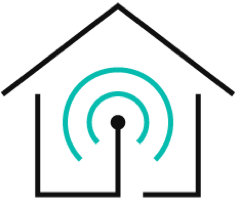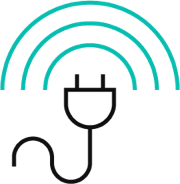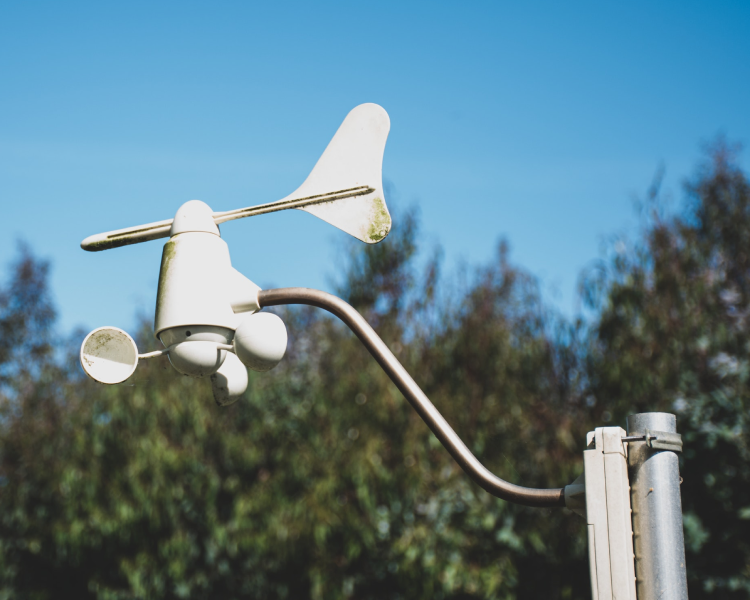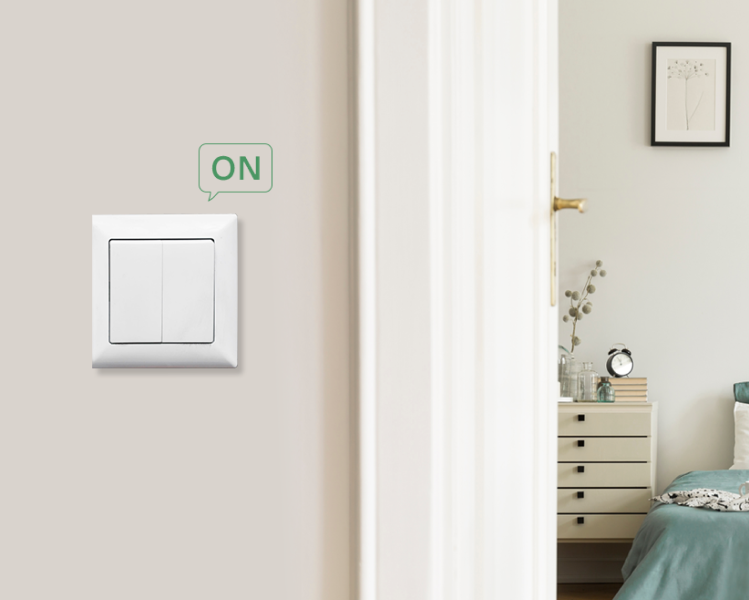Smart sensors are revolutionizing the way we live and work. These tiny devices have the ability to collect and transmit data, making our lives more efficient and convenient.
But what exactly is a smart sensor and how does it work? In this blog post, we will explore the definition, purpose, and importance of smart sensors, as well as different types of smart sensors and how they work.
We will also delve into the various applications of smart sensors in industries such as automation, healthcare, and transportation.
By the end of this post, you will have a better understanding of the technology that is shaping our future. So, whether you're a tech enthusiast or just curious about the latest developments in sensor technology, this post is for you. So, fasten your seat belts, and let's dive into the world of smart sensors!
- What is a Smart Sensor?
- How Does a Smart Sensor Work?
- Types Of Smart Sensors In A Smart Home And Its Applications
- Smart Home Control System - Evvr Center Lite To Integrate Your Smart Devices At Home
What is a Smart Sensor?
A smart sensor is a device that is able to detect and measure specific physical or chemical changes in its environment, and then convert that information into an electrical signal that can be read by a computer or other electronic device.
They are typically small, low-power devices that can be integrated into a wide range of applications and environments. Smart sensors can be used to measure things such as temperature, light, pressure, movement, and more, and are an essential part of the Internet of Things (IoT) ecosystem.
To summarize smart sensors:
- Detect and measure specific physical or chemical changes in the environment
- Convert the detected information into an electrical signal that can be read by a computer or other electronic device
- Process, analyze and communicate data in real-time
- Work by being connected to other devices, systems or networks
- Can be integrated into a wide range of applications and environments
- Can measure things such as temperature, light, pressure, movement, and more
How Does a Smart Sensor Work?
Have you ever wondered how those tiny smart sensors in your phone or car can collect and transmit so much information? The truth is, the technology behind smart sensors is quite complex, but it's also incredibly fascinating.
Let's break it down step by step:
Sensing Principle
Smart sensors are designed to detect specific physical or chemical changes in their environment, such as changes in temperature, light, or pressure. They use a variety of technologies to accomplish this, such as thermistors for temperature sensing or photodiodes for light sensing.
Data Processing
Once the sensor has detected a change in its environment, it converts that change into an electrical signal that can be read by a computer or other electronic device. The data is then processed and analyzed to extract useful information.
Communication
Smart sensors are also able to communicate the processed data to other devices, such as smartphones, computers, or industrial control systems. This is done through a variety of communication technologies such as Bluetooth, Wi-Fi, or Zigbee.
Power Source
Smart sensors need power to function, and they can be powered by batteries, solar cells, or other energy sources. Many smart sensors have built-in power management systems that help to extend battery life and minimize power consumption.
And there you have it! The basic working principle of a smart sensor. But what makes smart sensors truly "smart" is their ability to process and analyze data in real-time, and then transmit the results to other devices for further analysis or action.
Types Of Smart Sensors In A Smart Home And Its Applications
Smart homes are becoming increasingly popular, and one of the key technologies that make them possible are smart sensors.
Here are some common types of smart sensors that can be found in a smart home, and their applications:
Temperature Sensors
A wireless temperature sensor can detect changes in temperature and are used in smart thermostats to control the temperature of the home. They can also be used in smart refrigerators to monitor the temperature and alert you when it gets too warm or too cold.
Light Sensors
A smart light sensor can detect changes in light levels and are commonly found in smart lighting systems. They can be used to automatically adjust the brightness of lights based on the time of day or the presence of people in the room.
Proximity Sensors
Proximity sensors can detect when an object is near and are commonly found in smart security systems. They can be used to detect motion and trigger alarms or send notifications to your smartphone.
Air Quality Sensors
Air quality sensors are typically used to detect changes in air quality such as the presence of dust, smoke, or harmful gasses and are commonly found in smart air purifiers or HVAC systems.
Water Leak Sensors
A smart water sensor is used to detect water leaks and are commonly found in smart water management systems. They can be used to alert you of any potential leaks and help prevent water damage.
Occupancy Sensors
Occupancy sensors are usually used to detect the presence of people in a room and are commonly found in smart lighting and heating systems. They can be used to automatically turn lights on or off or adjust the temperature based on the presence of people in the room.
Motion Sensors
You may have heard about motion sensors a lot and perhaps wondered “what does a motion sensor do?”
Well, these clever devices are designed to monitor movement, and are commonly found in smart security systems and lighting systems. They can be programmed to detect even the slightest of movements, like a pet walking around the house, or a person entering the room. This makes them an essential component in monitoring for unexpected or suspicious movements and triggering an alarm.
Smoke and CO Sensors
These advanced sensors can find out even the slightest traces of smoke or carbon monoxide, and are commonly found in smart smoke and CO alarms. They can be integrated with other smart devices in the home to provide an early warning system, sending notifications to your phone and triggering alarms in case of a fire or gas leak, ensuring your safety and well-being.
Window and Door sensors
The ability to monitor and receive alerts for open windows and doors is a crucial aspect of a smart home, providing both financial savings and security.
The integration of smart garage door openers allows for seamless monitoring, alerting the homeowner if the garage door is left open inadvertently. Similarly, smart window locks provide an added layer of security by sounding an alarm and notifying the homeowner in the event of an attempted intrusion through a window.
Furthermore, door sensors can be utilized for energy efficiency by connecting them to smart lighting systems, automatically turning lights on and off as occupants enter or exit a room.
These are just a few examples of the many types of smart sensors available today. From monitoring our homes and cars, to keeping our factories and power plants running smoothly, smart sensors are playing an increasingly important role in our daily lives.
Smart Home Control System - Evvr Center Lite To Integrate Your Smart Devices At Home
The Evvr Center Lite is a powerful smart home control system that allows you to easily control all of your smart devices including thermostats, lightbulbs, outlets and switches, door locks and sensors, doorbells, garage door openers, energy monitors, and window treatments/coverings and sensors.
With its multi-protocol connection capabilities, the Evvr Center Lite can connect to all these devices through Wi-Fi, Zigbee 3.0, Bluetooth, or Z-Wave protocols.
Using the Evvr App, you can easily control your smart devices from your smartphones, tablets, or computers. The app provides an intuitive interface that allows you to group your devices by space, making it easy to control multiple devices at once.
For example, users can set up a "bedtime" scene that will turn off all the lights, lock the doors, and adjust the thermostat to a comfortable temperature.
You can also use the Evvr Center Lite to monitor and control your smart thermostats, helping them save money on energy bills.
You can also schedule temperature changes, adjust the temperature remotely, or even set the thermostat to automatically adjust the temperature based on the weather or occupancy.
The Evvr Center Lite can also be used to control smart lightbulbs, outlets and switches, allowing you to turn off lights, control the brightness and change the color of your lights from anywhere.
The Evvr Center Lite also works with smart door locks and sensors, which can be controlled remotely, and can be set to automatically lock or unlock the doors based on the your location or a schedule
Final Thoughts
With the ability to connect and integrate with other smart devices, smart sensors allow you to monitor and control your home from anywhere, giving you peace of mind and a newfound level of convenience. No longer do we have to worry about leaving the lights on or the thermostat set too high, as smart sensors can take care of these tasks for us, saving us energy and money.
In short, smart sensors are a game-changer in the world of home automation and smart home technology. If you're ready to take the next step and make your home smarter and more connected, please get in touch with us. Our team is here to answer any questions you may have and help you find the perfect solution for your smart home needs. Let's work together to make your home a smarter, more connected, and more comfortable place to live.
















